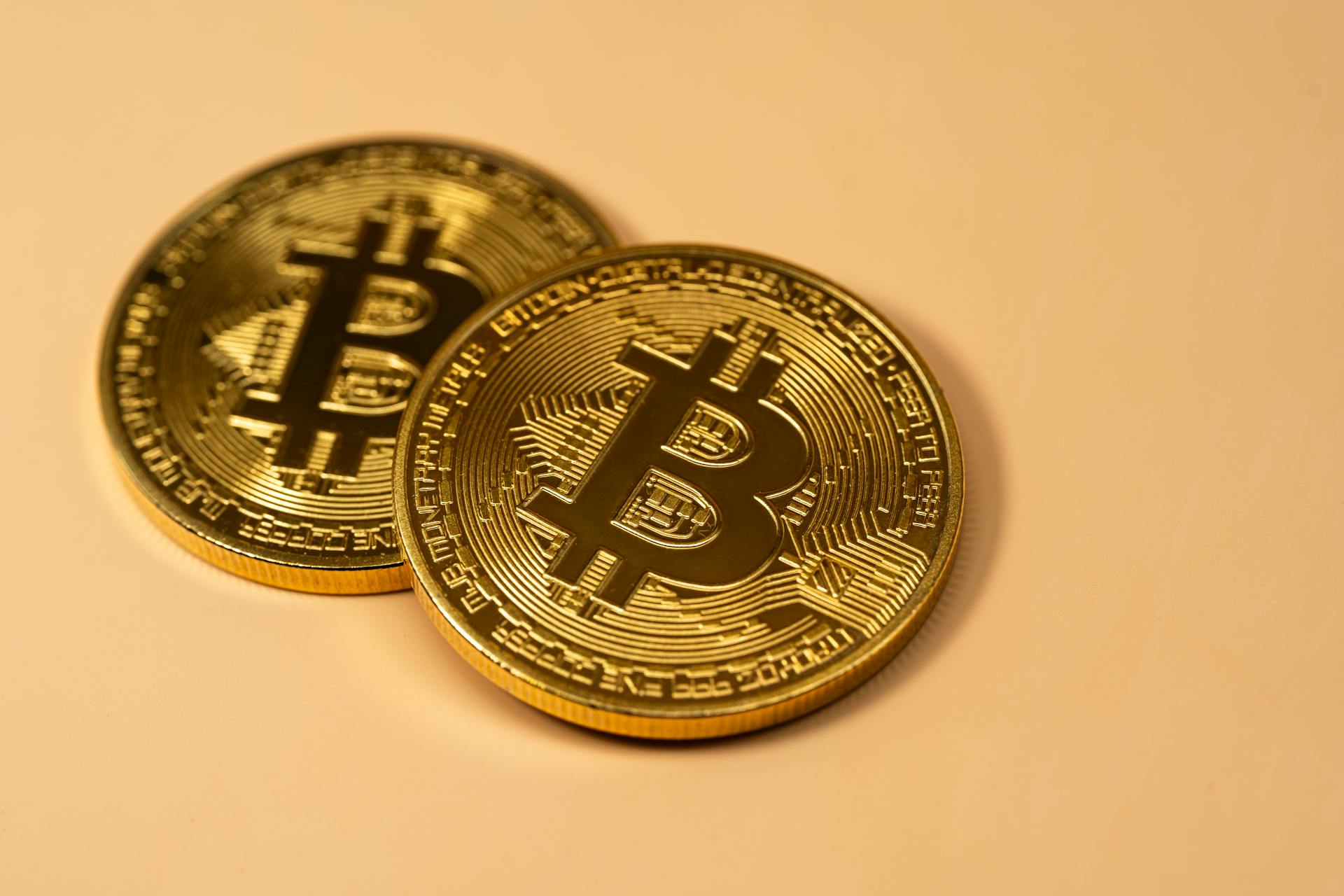
The Stacks blockchain ecosystem is a decentralized platform that allows developers to build scalable and user-friendly applications. It's built on top of the Bitcoin blockchain, leveraging its security and trustless nature.
Stacks is designed to be a more accessible and user-friendly alternative to other blockchain platforms. Its focus on usability and scalability makes it an attractive option for developers who want to build real-world applications.
The Stacks ecosystem is fueled by the STX token, which is used for transaction fees and other purposes. The token is also used to incentivize developers to build on the platform.
As a decentralized platform, the Stacks ecosystem is governed by a community of stakeholders who work together to make decisions about the platform's development and direction.
Suggestion: Build Finance DAO
Key Features
The Stacks blockchain has some amazing features that set it apart from other networks. One of its key features is that it's secured by the entire hash power of Bitcoin, making it incredibly secure.
Here are some of the unique features of Stacks:
- S - Secured by the entire hash power of Bitcoin (Bitcoin finality)
- T - Trustless Bitcoin peg mechanism; write to Bitcoin
- A - Atomic BTC swaps and assets owned by BTC addresses
- C - Clarity language for safe, decidable contracts
- K - Knowledge of full Bitcoin state; read from Bitcoin
- S - Scalable, fast transactions that settle on Bitcoin
The Stacks blockchain also uses the Clarity language for safe contracts that can respond to Bitcoin transactions, making it a powerful tool for developers.
Unique Smart-Contract Language
Stacks' unique smart-contract language, Clarity, prioritizes predictability and security. Clarity is a decidable language, meaning you can know, with certainty, from the code itself what the program will do.
Clarity is interpreted and broadcast on the blockchain as is, not compiled. This ensures that the executed smart-contract code is human-readable and auditable at all times. The language is also decidable, guaranteeing that it can be precisely determined which code is executed, for what function, and what duration.
Clarity distinguishes itself from other smart-contract languages in two crucial ways: it is interpreted and broadcast on the blockchain as is, not compiled, and it is decidable, not Turing complete. This makes Clarity a unique and secure smart-contract language.
Here are the key features of Clarity:
- The language is interpreted and broadcast on the blockchain as is, not compiled.
- The language is decidable, not Turing complete.
These features make Clarity a safe and predictable smart-contract language, ideal for building decentralized applications on the Stacks blockchain.
Bitcoin Layer 2 for Smart Contracts and DeFi
The Stacks platform is a Bitcoin layer 2 solution that enables the creation of smart contracts and decentralized applications (dApps) on top of the Bitcoin blockchain. It's built to bring more functionality to Bitcoin without modifying the underlying blockchain.
Stacks uses a unique consensus mechanism called Proof-of-Transfer (PoX), which settles all Stacks transactions on Bitcoin. This ensures the security and decentralization of the Bitcoin blockchain.
The Stacks layer has several key innovations that make it unique, including:
- S – Secured by the entire hash power of Bitcoin (Bitcoin finality).
- T – Trustless Bitcoin peg mechanism; write to Bitcoin.
- A – Atomic BTC swaps and assets owned by BTC addresses.
- C – Clarity language for safe, decidable contracts.
- K – Knowledge of full Bitcoin state; read from Bitcoin.
- S – Scalable, fast transactions that settle on Bitcoin.
Stacks also uses a token called sBTC, which allows users to use their BTC in the Stacks ecosystem's dApps.
Broaden your view: Stacks Escrow Smart Contract
The Stacks platform has several benefits, including:
- Trustless Bitcoin peg mechanism
- Atomic BTC swaps and assets owned by BTC addresses
- Clarity language for safe, decidable contracts
- Knowledge of full Bitcoin state; read from Bitcoin
- Scalable, fast transactions that settle on Bitcoin
These benefits make Stacks an attractive solution for developers and users who want to build and use decentralized applications on top of the Bitcoin blockchain.
Here are some key features of the Stacks platform:
The Stacks platform has the potential to unlock new use cases and applications for Bitcoin, and its unique features and benefits make it an attractive solution for developers and users.
Scalability
Scalability is a crucial aspect of any system, and it's not just about throwing more resources at the problem. In fact, scalability is about designing a system that can handle increasing loads and demands without breaking.
One way to achieve scalability is by using a distributed architecture, which can be seen in the example of a cloud-based system that can automatically scale up or down depending on demand. This allows businesses to save money and resources by only paying for what they need.
A key benefit of scalability is that it enables businesses to handle sudden spikes in traffic or demand without experiencing downtime or performance issues. For instance, a company that experiences a sudden surge in sales can handle the increased traffic without slowing down.
Scalability also enables businesses to expand their operations globally without worrying about the technical infrastructure. This can be seen in the example of a company that uses a cloud-based platform to manage its international operations, allowing it to scale up or down as needed.
By designing a scalable system, businesses can ensure that their operations are always running smoothly, even during periods of high demand.
Take a look at this: Smart Contract Development Company
Staking Without Proof-of-Stake
Stacking in the Stacks ecosystem is often confused with staking found in Proof-of-Stake consensus mechanisms. However, Stacks' consensus mechanism is not Proof-of-Stake.
The process of locking up STX coins to participate in network security is called stacking. Stacking happens over reward cycles with a fixed length, where a set of Bitcoin addresses from stacking participants receives bitcoin rewards.
See what others are reading: What Is a Consensus Mechanism
To participate in stacking, one needs to register for a rewards cycle by broadcasting a signed message that locks up their STX coins for a defined lockup period. This message also requires providing a Bitcoin address to receive funds from block-proposing miners.
The locked-up STX coins are temporarily held for bitcoin rewards, which supports the Stacks blockchain's network security and consensus. This is why users within the Stacks ecosystem generally use the term "stacking" instead of "staking".
You might like: Colored Coins
Investing and Buying
You can buy Stacks (STX) tokens on various exchanges, including Okcoin, Coinbase Global, and Crypto.com. These exchanges offer a platform for investors to purchase and trade STX tokens.
To buy STX tokens, you can follow a simple step-by-step guide using Xverse, a wallet available on iOS, Android, and Chrome browser extension. This process involves downloading the wallet, clicking the buy button, and entering the desired amount and wallet address. You'll also need to verify your email and basic information.
For more insights, see: Co-founder Animoca Brands - Yat Siu
If you prefer to use a different exchange, you can also buy STX tokens directly on Binance, KuCoin, Gate.io, Bybit, or Bitcoin.com Exchange. Keep in mind that the specific process may vary depending on your location, so it's essential to review the terms and conditions of any fiat onramp service before making a purchase.
Here are some popular exchanges where you can buy Stacks:
- Okcoin
- Coinbase Global
- Crypto.com
- Binance
- KuCoin
- Gate.io
- Bybit
- Bitcoin.com Exchange
Is a Good Investment?
Investing in Stacks can be a good decision if you're looking for a project that operates differently from other programmable blockchains.
Stacks has a unique proof-of-transfer system and the ability to earn Bitcoin rewards by stacking STX tokens, which is a significant benefit.
The fact that Stacks isn't a household name yet is actually a good thing for investors who believe in it and still want to get in reasonably early.
There's still plenty of room for growth in terms of price and market cap, making it a potentially attractive investment opportunity.
Remember that the cryptocurrency market is volatile, and prices can change dramatically, so it's essential to treat Stacks as a long-term investment.
Don't get too caught up in weekly price swings, especially with a project like Stacks that is still developing and may take time to mature.
Adoption of the Stacks platform is key to determining the value of Stacks, and as more people use and rely on it, demand for STX crypto tokens or STX NFTs will increase, leading to a potential increase in value.
The success of Clarity-powered smart contracts can also impact the value of STX, as developers and users need STX to access these contracts.
For another approach, see: Bitcoin Value History
How to Buy
If you're looking to get started with buying STX tokens, you can do so through various exchanges and fiat onramp services.
You can download the Xverse wallet, available on iOS and Android, as well as a Chrome browser extension, to buy STX tokens using Xverse. To do so, click or tap the buy button on your wallet home screen to purchase from Binance, MoonPay or Transak.

You'll need to enter the amount in STX that you wish to purchase and your Xverse wallet address. Verifying your email and basic information is also a necessary step.
You can also purchase STX tokens directly through a number of exchanges, including Kraken, KuCoin, Binance, OKX, Gate.io, Bybit, and Bitcoin.com Exchange.
Here are some popular exchanges where you can buy Stacks:
- Okcoin
- Coinbase Global (COIN)
- Crypto.com
These exchanges allow you to set up an account and purchase Stacks, which can then be transferred to your wallet and stacked in a pool.
Using Stacks
You can use the Stacks layer to make Bitcoin a fully programmable asset in a trustless manner. This can unlock hundreds of billions of dollars of passive Bitcoin capital and make Bitcoin the backbone of a more secure web3.
The Stacks layer enables smart contracts and decentralized applications to trustlessly use Bitcoin as an asset and settle transactions on the Bitcoin blockchain. It introduces Bitcoin settlement of transactions, the Clarity language for safe contracts that can respond to Bitcoin transactions, and atomic swaps of assets with BTC.
For your interest: Crypto Asset Governance Alliance
You can use the Stacks layer to create a trustless, two-way Bitcoin peg to move BTC in/out of the layer and write to Bitcoin. This is a key innovation that makes Stacks unique. The Stacks layer also enables fast transactions in between Bitcoin blocks, making it a scalable solution.
Here are the key innovations that make the Stacks layer unique:
- S – Secured by the entire hash power of Bitcoin (Bitcoin finality).
- T – Trustless Bitcoin peg mechanism; write to Bitcoin.
- A – Atomic BTC swaps and assets owned by BTC addresses.
- C – Clarity language for safe, decidable contracts.
- K – Knowledge of full Bitcoin state; read from Bitcoin.
- S – Scalable, fast transactions that settle on Bitcoin.
How It Works
Here's the "How It Works" section of the article:
Stacks connects to Bitcoin and validates transactions through its proof-of-transfer consensus mechanism, which is a variation of proof of burn.
Miners in the Stacks network transfer their Bitcoin to other participants in the network instead of burning it, and the protocol randomly selects a winning miner who validates a block of Stacks transactions and receives a block reward in STX tokens.
The block reward is paid in STX tokens and is issued by the protocol. Miners can earn a block reward of 1,000 STX per block in the first 4 years, 500 STX per block in the following 4 years, 250 STX per block in the following 4 years, and 125 STX per block from then on indefinitely.
You might enjoy: What Is a Blockchain Block
These block rewards are halved every four years for three consecutive periods, which is synchronized with Bitcoin halvings.
The Stacks layer for smart contracts has a unique consensus mechanism called Proof-of-Transfer, which is an adaptation of Proof-of-Burn. Miners that participate in the consensus algorithm send a Bitcoin transaction to predefined Bitcoin addresses to produce blocks in the Stacks blockchain.
The probability of being chosen to produce a block increases with the amount of Bitcoin a miner transfers to the list of Bitcoin addresses. Compensation for miners is provided in the form of block rewards and transactions fees from the Stacks network, issued in STX tokens.
Here's a breakdown of the block rewards:
The Stacks consensus mechanism is mimicking Bitcoin's Proof-of-Work mechanism, but instead of using energy to produce new blocks, Stacks miners use Bitcoin to maintain the Stacks blockchain.
Choosing a Crypto Wallet
First, consider whether you want a hot wallet or a cold wallet. Hot wallets are online and more convenient to use, but they can potentially be vulnerable to hacks.
Hot wallets are online, making them convenient to use, but they can be vulnerable to hacks, so it's essential to be cautious.
Cold wallets, on the other hand, are offline, which limits their vulnerability to attacks, but they can be less convenient as you would need to manually connect a device to the internet for each transaction.
Cold wallets are often stored in secure locations like a bank vault, which may not be easily accessible.
Next, consider custodial vs self-custodial wallets. Custodial wallets are highly vulnerable to login attacks, data leaks, and social engineering attacks.
Custodial wallets can even go insolvent, making it impossible to access your holdings, so many cryptocurrency holders choose to use self-custodial wallets instead.
Self-custodial wallets empower users to act as their own bank, eliminating the need for third-party confirmation for transactions and withdrawals.
Private keys are encrypted by default in self-custodial wallets, ensuring that users have full control over their assets at all times.
Xverse is the leading self-custodial hot wallet for Stacks, which offers an in-app browser to connect to Bitcoin dApps, hold NFTs, and earn Bitcoin rewards in a Stacking pool.
The Xverse app is also available as a Chrome browser extension, allowing you to view your Stacks-powered Bitcoin NFTs on your desktop.
Consider reading: Ethereum App Software
Accessing Bitcoin Web3
Accessing Bitcoin Web3 on Stacks is a game-changer. You can use your Xverse wallet to browse platforms, log in to desired sites, connect your wallet, and sign transactions. This allows you to access a wide range of decentralized applications (dApps) and non-fungible tokens (NFTs) that leverage the security and decentralization of the Bitcoin blockchain.
You can even secure your "BNS" .btc domain like "satoshi.btc", which serves as your Bitcoin decentralized identity. This is a unique way to identify yourself on the web.
With Stacks, you'll soon be able to send and receive Bitcoin using your .btc username and purchase them directly in-app with Xverse. This makes it easier to use Bitcoin for everyday transactions.
The Xverse wallet is a key part of the Stacks ecosystem, allowing you to access and interact with various dApps and NFTs. It's a powerful tool for anyone looking to explore the world of Bitcoin web3.
Here are some of the exciting Bitcoin web3 decentralized applications you can access in the Stacks ecosystem:
- Decentralized finance (DeFi) applications
- NFT marketplaces
- Decentralized identity platforms
- More to come!
Frequently Asked Questions
Is Stacks a layer-2?
Yes, Stacks is a layer-2 blockchain that builds on top of the Bitcoin network. This layer-2 solution aims to enhance the Bitcoin network's functionality and performance.
Featured Images: pexels.com


